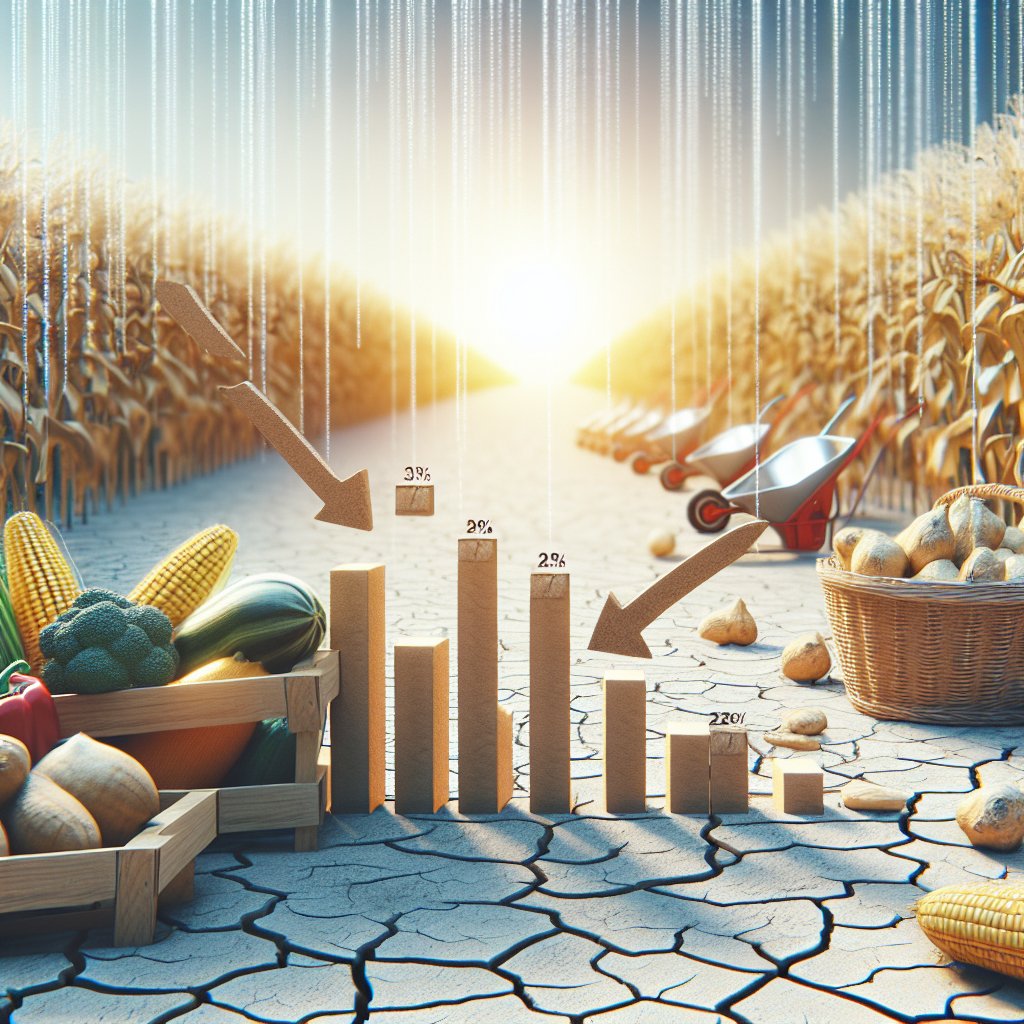The impact of drought on agricultural commodity prices in 2024 is a pressing concern for farmers, economists, and consumers alike. As climate change continues to alter weather patterns, the frequency and severity of droughts are expected to increase, leading to significant implications for crop yields and market dynamics. This article explores the various ways in which drought conditions can affect agricultural prices, the underlying mechanisms at play, and potential strategies for mitigation and adaptation in the face of such challenges.
Understanding Drought and Its Effects on Agriculture
Drought is defined as a prolonged period of abnormally low rainfall, leading to a water shortage that can severely impact agricultural production. The effects of drought on agriculture are multifaceted, influencing not only the quantity of crops produced but also their quality and market prices. In 2024, the agricultural sector is likely to face heightened challenges due to the anticipated increase in drought occurrences, which can be attributed to climate change and other environmental factors.
1. Crop Yields and Drought
One of the most direct impacts of drought on agriculture is the reduction in crop yields. When plants do not receive adequate water, their growth is stunted, leading to lower production levels. This phenomenon is particularly pronounced in staple crops such as wheat, corn, and soybeans, which are essential for food security and global trade.
- Water Stress: Drought conditions create water stress for crops, which can lead to wilting, reduced photosynthesis, and ultimately, lower yields.
- Soil Degradation: Prolonged drought can lead to soil degradation, reducing its fertility and ability to retain moisture, further exacerbating the problem in subsequent growing seasons.
- Pest and Disease Pressure: Drought-stressed plants are more susceptible to pests and diseases, which can further diminish crop yields.
As a result of these factors, farmers may find themselves producing significantly less than expected, leading to a supply shortage in the market. This supply-demand imbalance is a key driver of price increases for agricultural commodities.
2. Market Dynamics and Price Fluctuations
The relationship between drought, crop yields, and market prices is complex. When drought conditions lead to reduced crop yields, the immediate effect is often an increase in prices. This price surge can have several implications:
- Increased Production Costs: Farmers may face higher costs for inputs such as irrigation, fertilizers, and pest control as they attempt to mitigate the effects of drought. These increased costs can be passed on to consumers in the form of higher prices.
- Speculation in Commodity Markets: Traders and investors often react to drought forecasts by speculating on future prices, which can lead to volatility in commodity markets. This speculation can exacerbate price increases, making it difficult for consumers to predict costs.
- Global Trade Implications: Countries that rely heavily on agricultural exports may find themselves at a disadvantage during drought years, leading to shifts in global trade patterns and further influencing prices.
In 2024, these dynamics are expected to play out as various regions experience differing levels of drought severity. Countries that are heavily reliant on agriculture for their economies may face significant challenges, while others may benefit from increased prices for their agricultural exports.
Strategies for Mitigation and Adaptation
As the agricultural sector grapples with the impacts of drought, it is essential to explore strategies for mitigation and adaptation. Farmers, policymakers, and researchers must work together to develop solutions that can help minimize the negative effects of drought on crop production and market prices.
1. Sustainable Agricultural Practices
Implementing sustainable agricultural practices can help farmers better manage water resources and improve crop resilience to drought conditions. Some effective strategies include:
- Conservation Tillage: Reducing tillage can help maintain soil moisture and improve soil health, making crops more resilient to drought.
- Crop Rotation: Rotating crops can enhance soil fertility and reduce pest pressures, leading to healthier plants that are better able to withstand drought.
- Cover Cropping: Planting cover crops during the off-season can help retain soil moisture and prevent erosion, contributing to better overall soil health.
2. Technological Innovations
Advancements in technology can also play a crucial role in helping farmers adapt to drought conditions. Innovations such as precision agriculture, drought-resistant crop varieties, and improved irrigation techniques can significantly enhance agricultural resilience.
- Precision Agriculture: Utilizing data analytics and technology to optimize water usage and monitor crop health can lead to more efficient farming practices.
- Drought-Resistant Varieties: Breeding and genetically modifying crops to be more drought-resistant can help ensure stable yields even in challenging conditions.
- Efficient Irrigation Systems: Implementing drip irrigation and other water-saving technologies can help farmers use water more efficiently, reducing the impact of drought.
3. Policy and Support Systems
Governments and organizations can play a vital role in supporting farmers during drought conditions. Policies that promote sustainable practices, provide financial assistance, and invest in research can help mitigate the impacts of drought on agricultural prices.
- Financial Assistance Programs: Providing subsidies or financial aid to farmers affected by drought can help them recover and maintain production levels.
- Research and Development: Investing in research to develop new technologies and practices can lead to more resilient agricultural systems.
- Education and Training: Offering training programs for farmers on sustainable practices and drought management can empower them to adapt to changing conditions.
Conclusion
The impact of drought on agricultural commodity prices in 2024 is a complex issue that requires a multifaceted approach. Understanding the relationship between drought, crop yields, and market dynamics is essential for farmers, policymakers, and consumers. By implementing sustainable practices, embracing technological innovations, and supporting effective policies, the agricultural sector can better navigate the challenges posed by drought and ensure food security for future generations.




